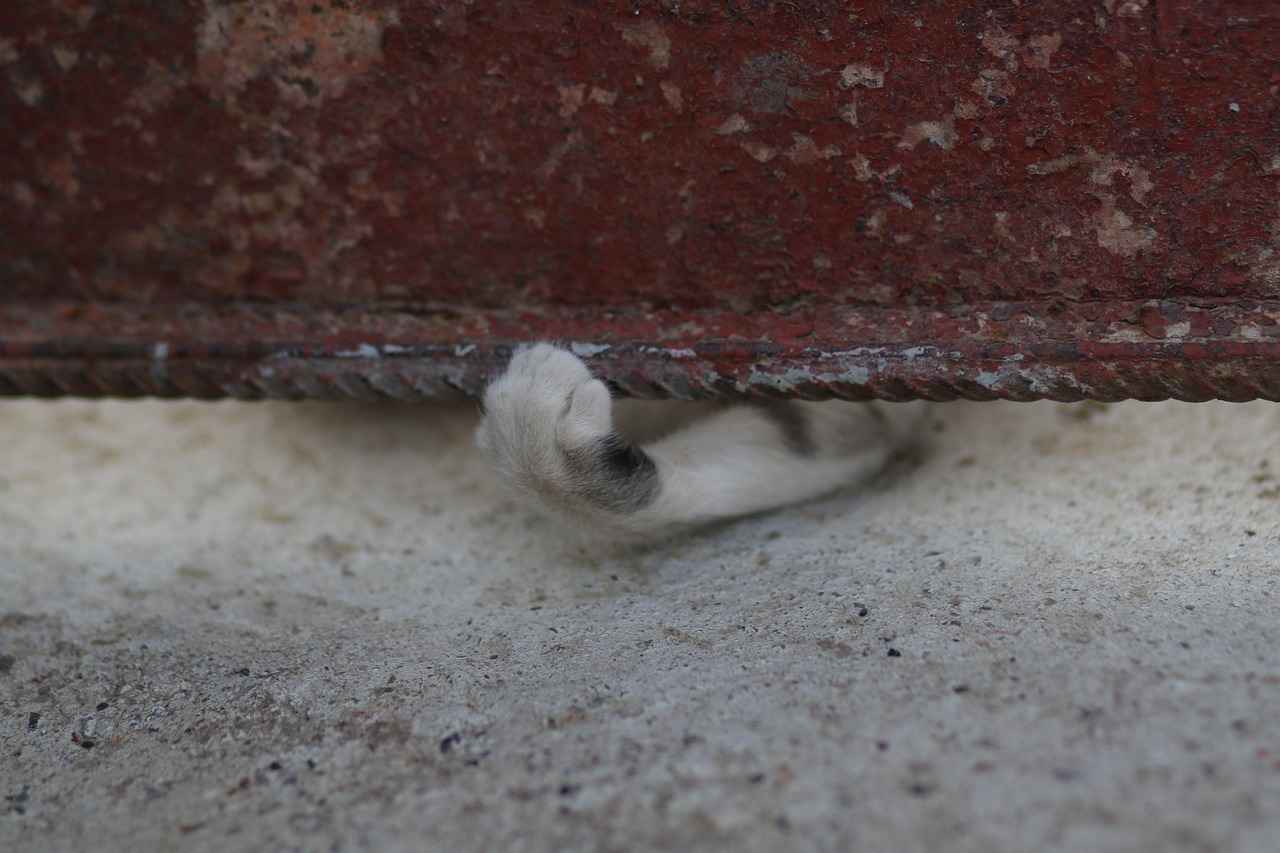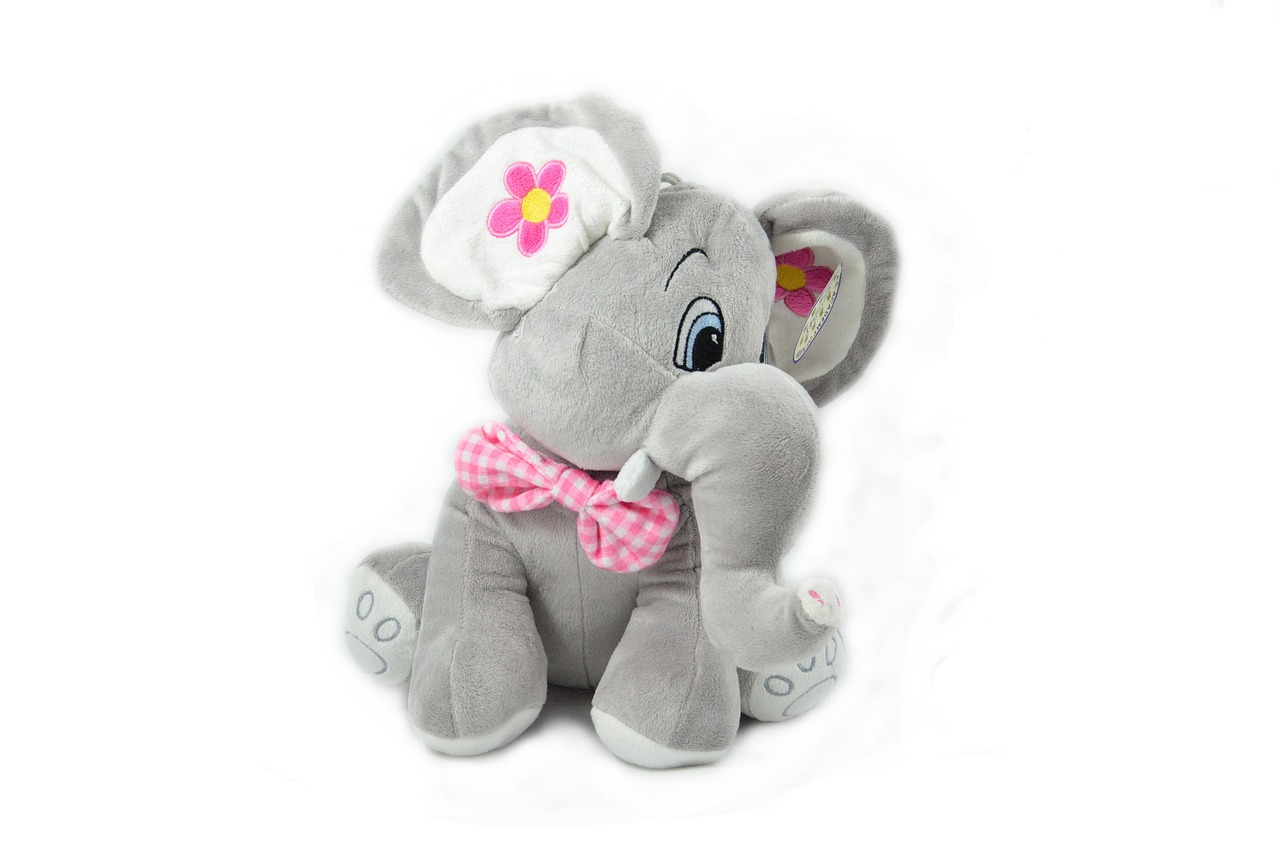This article explores the educational and entertainment value of the popular children’s show Paw Patrol, offering insights for parents on its impact on child development and social skills. As a beloved animated series, it captures the hearts of young viewers while also providing valuable lessons.
Understanding Paw Patrol’s Concept
Paw Patrol is an animated series that follows a group of rescue dogs led by a boy named Ryder. Each episode features the team embarking on exciting missions to help their community. The show’s premise revolves around adventure, teamwork, and problem-solving, making it particularly appealing to young audiences. The vibrant animation and engaging storylines keep children entertained while subtly introducing them to important life lessons.
Educational Benefits of Paw Patrol
The series incorporates various educational themes that benefit children’s learning and development. These themes include:
- Teamwork: The characters work together to achieve common goals, teaching children the importance of collaboration.
- Problem-Solving: Each episode presents unique challenges that require critical thinking and creativity to resolve.
- Community Service: The show emphasizes helping others, instilling a sense of responsibility and empathy in young viewers.
Promoting Teamwork and Cooperation
Paw Patrol emphasizes the significance of teamwork. The characters demonstrate how working together can lead to success, which can inspire children to collaborate with their peers. For example, when the Paw Patrol team faces a challenge, they combine their unique skills to find a solution. This teaches kids that everyone has something valuable to contribute.
Real-Life Applications of Teamwork
Children can apply lessons from the show in their daily interactions. Whether in school or at home, they learn to cooperate and appreciate the strengths of others. Practical examples of this can be seen during group projects or team sports, where collaboration is essential for achieving common objectives.
Encouraging Empathy and Kindness
The characters often demonstrate empathy by helping others in need. These moments teach children about compassion and kindness. For instance, when a character goes out of their way to assist someone, it encourages young viewers to consider the feelings of others and act with kindness in their own lives.
Problem-Solving Skills Developed Through Episodes
Each episode presents a unique challenge that the Paw Patrol team must solve. By watching these scenarios unfold, children can learn to think critically and develop problem-solving skills. The show encourages them to analyze situations and come up with creative solutions, which is a valuable skill in their education and future endeavors.
Social Skills and Emotional Development
Watching Paw Patrol can aid in the development of social skills and emotional intelligence. The interactions among characters provide a framework for understanding emotions and relationships. Children observe how characters handle various situations, which can help them navigate their own social interactions.
Understanding Emotions Through Characters
The diverse personalities of the Paw Patrol team help children recognize and express their feelings. As they watch the characters experience joy, frustration, or sadness, children learn to identify these emotions within themselves. This emotional awareness is significant for their overall development.
Conflict Resolution in Paw Patrol
Episodes often feature conflicts that require resolution. By observing how the characters resolve their differences, children can learn effective conflict resolution strategies. This understanding can be beneficial in their own lives, helping them manage disagreements with peers in a constructive manner.
Parental Concerns About Paw Patrol
Despite its benefits, some parents express concerns regarding content. Common worries include:
- Addressing Violence and Safety Issues: Some episodes involve rescue missions that may seem intense. Parents can contextualize these scenarios to ensure children understand safety and appropriate behavior.
- Balancing Screen Time with Other Activities: While Paw Patrol can be educational, moderation is key. It’s important for parents to balance screen time with physical activity and creative play.
By understanding the content and themes of Paw Patrol, parents can make informed decisions about their children’s viewing habits, ensuring a positive and enriching experience.
Paw Patrol,
Is Paw Patrol Good for Kids? A Parent’s Guide
This article explores the educational and entertainment value of the popular children’s show Paw Patrol, offering insights for parents on its impact on child development and social skills.
Understanding Paw Patrol’s Concept
Paw Patrol is a children’s animated series that follows a group of rescue dogs led by a boy named Ryder. The show’s premise revolves around teamwork and adventure, appealing to young audiences with its colorful animation and engaging storylines. Each episode presents a new mission that the Paw Patrol must tackle, capturing the attention of children and teaching valuable lessons along the way.
Educational Benefits of Paw Patrol
The series incorporates various educational themes, including teamwork, problem-solving, and community service. These elements can significantly benefit children’s learning and development.
- Promoting Teamwork and Cooperation
Paw Patrol emphasizes the importance of working together to achieve goals. The show encourages kids to collaborate, demonstrating how teamwork can lead to successful outcomes.
- Real-Life Applications of Teamwork
Children can apply lessons from the show in their daily interactions, learning to cooperate with peers in school and at home. For example, during group projects, kids may remember how the Paw Patrol dogs support one another.
- Encouraging Empathy and Kindness
The characters often demonstrate empathy by helping others in need. These moments teach children about compassion and kindness, essential traits for social interactions.
Problem-Solving Skills Developed Through Episodes
Each episode presents a unique challenge that the Paw Patrol team must solve. This fosters critical thinking and problem-solving skills in young viewers, as they learn to analyze situations and consider solutions.
Social Skills and Emotional Development
Watching Paw Patrol can aid in the development of social skills and emotional intelligence. The show addresses emotions and relationships among characters, providing a platform for children to learn about their feelings.
- Understanding Emotions Through Characters
The diverse personalities of the Paw Patrol team help children recognize and express their feelings. This emotional awareness is significant in child development, as it lays the groundwork for healthy relationships.
- Conflict Resolution in Paw Patrol
Episodes often feature conflicts that need resolution. The narratives can teach children effective conflict resolution strategies, helping them navigate their interactions with peers.
Parental Concerns About Paw Patrol
Despite its benefits, some parents express concerns regarding content. Common worries include the portrayal of rescue missions and the potential for children to misinterpret intense situations.
- Addressing Violence and Safety Issues
Some episodes involve rescue missions that may seem intense. Parents can contextualize these scenarios, ensuring children understand safety and appropriate behavior in real-life situations.
- Balancing Screen Time with Other Activities
While Paw Patrol can be educational, moderation is key. Parents should balance screen time with physical activity and creative play to promote overall development.
Conclusion: Making Informed Choices
By understanding the content and themes of Paw Patrol, parents can make informed decisions about their children’s viewing habits, ensuring a positive and enriching experience. The show provides numerous opportunities for learning and growth, making it a valuable addition to children’s entertainment options.
offering insights for parents on its impact on child development and social skills.
Is Paw Patrol Good for Kids? A Parent’s Guide
This article explores the educational and entertainment value of the popular children’s show Paw Patrol, offering insights for parents on its impact on child development and social skills.
Understanding Paw Patrol’s Concept
Paw Patrol is a children’s animated series that follows a group of rescue dogs led by a boy named Ryder. The show’s premise revolves around teamwork and community service, making it appealing to young audiences who are drawn to adventure and heroism.
Educational Benefits of Paw Patrol
The series incorporates various educational themes, including teamwork, problem-solving, and community service. These elements can significantly benefit children’s learning and development.
- Promoting Teamwork and Cooperation: Paw Patrol emphasizes the importance of working together to achieve goals. The show encourages kids to collaborate and understand the value of teamwork.
- Real-Life Applications of Teamwork: Children can apply lessons from the show in their daily interactions, learning to cooperate with peers in school and at home.
- Encouraging Empathy and Kindness: The characters often demonstrate empathy by helping others in need, teaching children about compassion and kindness.
Problem-Solving Skills Developed Through Episodes
Each episode presents a unique challenge that the Paw Patrol team must solve. These scenarios foster critical thinking and problem-solving skills in young viewers, allowing them to engage in analytical thinking.
Social Skills and Emotional Development
Watching Paw Patrol can aid in the development of social skills and emotional intelligence. The show addresses emotions and relationships among characters, helping children to navigate their own feelings.
- Understanding Emotions Through Characters: The diverse personalities of the Paw Patrol team help children recognize and express their feelings, promoting emotional awareness.
- Conflict Resolution in Paw Patrol: Episodes often feature conflicts that need resolution, teaching children effective conflict resolution strategies.
Parental Concerns About Paw Patrol
Despite its benefits, some parents express concerns regarding content. It is essential to address common worries and offer insights into balancing screen time with other activities.
- Addressing Violence and Safety Issues: Some episodes involve rescue missions that may seem intense. Parents can contextualize these scenarios to ensure children understand safety and appropriate behavior.
- Balancing Screen Time with Other Activities: While Paw Patrol can be educational, moderation is key. Parents should balance screen time with physical activity and creative play.
Conclusion: Making Informed Choices
By understanding the content and themes of Paw Patrol, parents can make informed decisions about their children’s viewing habits. This ensures a positive and enriching experience that supports their development.
Understanding Paw Patrol’s Concept
Paw Patrol is a beloved children’s animated series that has captured the hearts of young audiences around the world. The show features a team of rescue dogs, each with unique skills, who work together to solve problems and help their community. Led by a resourceful boy named Ryder, these pups embark on various adventures that often involve rescuing animals, assisting citizens, and tackling challenges that require teamwork and critical thinking.
The premise of Paw Patrol is not only entertaining but also educational, making it appealing to both children and parents. The colorful animation, engaging characters, and relatable storylines draw in young viewers, while the underlying messages promote important life skills. Each episode typically presents a problem that the Paw Patrol team must address, showcasing the values of cooperation, empathy, and problem-solving.
One of the key aspects of Paw Patrol is its ability to resonate with children through relatable scenarios. Kids can see themselves in the characters, who often face challenges similar to those they encounter in their own lives. This connection fosters a sense of understanding and encourages children to think critically about how to approach problems. For instance, when the pups work together to rescue a kitten stuck in a tree, it teaches children the importance of teamwork and helping others in need.
- Team Dynamics: Each dog has a specific role, such as Chase the police dog, Marshall the firefighter, and Skye the aviator. This diversity illustrates how different skills and personalities contribute to a successful team.
- Community Engagement: The show’s focus on community service instills a sense of responsibility in young viewers, encouraging them to think about how they can contribute positively to their own neighborhoods.
- Problem-Solving: With each mission, the pups face unique challenges that require creative solutions, promoting critical thinking among its audience.
The appeal of Paw Patrol extends beyond its entertaining plots. The characters embody qualities that parents wish to instill in their children, such as kindness, bravery, and perseverance. As children watch the pups face obstacles, they learn valuable lessons about resilience and the importance of never giving up, even when things get tough.
Moreover, the series encourages children to express their emotions and understand the feelings of others. The characters often display empathy, helping those in distress, which teaches young viewers about compassion and kindness. This emotional intelligence is crucial for social interactions and developing healthy relationships.
In summary, Paw Patrol is more than just an animated series; it is a tool for learning and development. By following the adventures of Ryder and his team of rescue dogs, children not only enjoy entertaining stories but also absorb important life lessons that can aid in their growth and understanding of the world around them.
Educational Benefits of Paw Patrol
Paw Patrol is not just an entertaining animated series; it also serves as a valuable educational tool for young viewers. The show is designed to engage children while imparting important life lessons. In this section, we will explore the educational benefits of Paw Patrol, focusing on its themes of teamwork, problem-solving, and community service, and how these elements contribute to children’s learning and development.
One of the most prominent themes in Paw Patrol is teamwork. Each episode showcases how the diverse team of rescue dogs collaborates to tackle various challenges. This not only entertains children but also teaches them the significance of working together towards a common goal. Understanding the dynamics of teamwork helps children develop essential social skills.
- Collaboration: Kids learn to share ideas and listen to others, fostering a spirit of cooperation.
- Role Assignment: The show illustrates how different roles contribute to success, highlighting the value of each member’s strengths.
Paw Patrol episodes often revolve around unique challenges that require creative solutions. As children watch the characters navigate these scenarios, they are encouraged to think critically and develop their own problem-solving skills. This aspect of the show is particularly beneficial for cognitive development.
- Critical Thinking: Young viewers are prompted to consider various solutions to problems, enhancing their analytical abilities.
- Decision Making: The characters’ choices illustrate the importance of making informed decisions, a skill that is crucial in everyday life.
Another vital theme in Paw Patrol is community service. The rescue missions often involve helping others in need, teaching children about the importance of empathy and kindness. These lessons are essential for fostering a sense of responsibility towards others.
- Helping Others: The show encourages children to engage in acts of kindness, reinforcing the idea that they can make a difference in their communities.
- Understanding Emotions: By observing the characters’ interactions, children learn to recognize and express their own feelings, which is crucial for emotional intelligence.
Children can apply the lessons learned from Paw Patrol in their daily lives. For example, when faced with group activities at school, they can utilize teamwork strategies observed in the show. Similarly, the problem-solving techniques can be employed in various situations, from resolving conflicts with friends to tackling homework challenges.
Furthermore, the show’s emphasis on helping others can inspire children to participate in community service activities, whether it’s volunteering or simply helping a neighbor. This not only reinforces the lessons from the show but also instills a sense of purpose and belonging.
In conclusion, Paw Patrol offers a rich tapestry of educational themes that contribute significantly to children’s learning and development. By promoting teamwork, enhancing problem-solving skills, and instilling a sense of community service, the series equips young viewers with essential life skills that will benefit them as they grow. Parents can take comfort in knowing that Paw Patrol is more than just a source of entertainment; it is a tool for nurturing well-rounded, socially aware children.

Promoting Teamwork and Cooperation
Paw Patrol, a beloved animated series for children, not only entertains but also imparts valuable lessons about teamwork and cooperation. The show follows a group of heroic pups led by a resourceful boy named Ryder as they embark on various rescue missions. Each episode emphasizes the importance of working together to solve problems, making it a perfect tool for teaching kids about collaboration.
One of the most significant aspects of Paw Patrol is how it illustrates the concept of teamwork in a relatable and engaging manner. The characters, each with their unique skills and personalities, come together to tackle challenges that they could not overcome alone. This dynamic encourages young viewers to understand that collaboration is essential for achieving common goals. The series effectively communicates that when individuals combine their strengths, they can accomplish much more than they could independently.
- Character Diversity: Each pup has a specific role that highlights their strengths, such as Chase’s leadership, Marshall’s firefighting skills, and Skye’s flying abilities. This variety shows children that everyone has something valuable to contribute.
- Problem-Solving Together: Throughout the series, the Paw Patrol team faces numerous obstacles that require them to brainstorm and strategize collectively. This aspect teaches kids the importance of sharing ideas and working together to find solutions.
- Encouraging Communication: The pups often communicate openly about their feelings and ideas, demonstrating how effective communication is crucial for teamwork. This encourages children to express themselves and listen to others.
Moreover, the show provides practical examples of real-life applications of teamwork. For instance, children can relate to scenarios in their daily lives, such as group projects at school or team sports, where collaboration is key to success. By observing the characters in Paw Patrol, kids can learn to appreciate the value of working with others and recognize that teamwork often leads to better outcomes.
Additionally, the series fosters an environment where children can practice empathy. The characters frequently support each other, showcasing the importance of being a reliable teammate. This portrayal encourages young viewers to be considerate and helpful towards their peers, thereby nurturing a sense of community and belonging.
Another valuable lesson imparted by Paw Patrol is the idea of celebrating achievements as a team. After successfully completing a mission, the pups often celebrate together, reinforcing the notion that success is sweeter when shared. This aspect can motivate children to work together and celebrate their collective accomplishments, fostering a sense of unity.
In conclusion, Paw Patrol serves as an excellent platform for teaching children about the significance of teamwork and cooperation. Through engaging stories and relatable characters, the show instills essential social skills that children can carry into their daily interactions. By understanding the importance of collaboration, kids are better equipped to navigate their social environments, making Paw Patrol not just an entertaining show, but a valuable educational tool as well.

Real-Life Applications of Teamwork
Paw Patrol is not just a source of entertainment; it serves as a valuable educational tool that teaches children about teamwork and cooperation. The lessons learned from the show can be applied in various real-life situations, helping children navigate their interactions with peers both at school and home. This section explores practical examples of how the show’s themes translate into everyday life.
- Group Projects at School: In a classroom setting, children often work on group assignments. Inspired by the teamwork displayed in Paw Patrol, kids can learn to communicate effectively, delegate tasks, and support one another to complete projects successfully. For instance, if a child takes on the role of a leader, they can ensure that everyone’s ideas are heard, just like Ryder does with his team.
- Playing Team Sports: Engaging in sports is another excellent way for children to apply the lessons of teamwork. Whether it’s soccer, basketball, or any other team sport, children can draw parallels to how the Paw Patrol pups work together to overcome challenges. They learn to celebrate each other’s strengths and work on weaknesses, fostering a sense of unity and collaboration.
- Family Activities: At home, families can engage in activities that require teamwork, such as cooking a meal together or organizing a family game night. Children can take turns leading different parts of the activity, mirroring how the Paw Patrol team collaborates on rescue missions. This not only strengthens family bonds but also reinforces the importance of cooperation.
- Resolving Conflicts: Children often encounter conflicts with friends or siblings. The conflict resolution strategies demonstrated in Paw Patrol episodes can help them navigate these situations. For example, if a disagreement arises during playtime, children can remember how the characters resolve their issues through communication and compromise, applying these techniques to their interactions.
- Community Involvement: Encouraging children to participate in community service activities can also reinforce the lessons of teamwork. Whether it’s helping at a local shelter or participating in clean-up drives, children can experience firsthand the impact of working together towards a common goal, just like the Paw Patrol team does in their adventures.
By integrating these practical examples into daily life, children can effectively apply the teamwork principles they observe in Paw Patrol. This not only enhances their social skills but also prepares them for future collaborative efforts in various settings.
Encouraging Empathy and Kindness
The characters in Paw Patrol frequently exhibit moments of empathy and compassion, which serve as valuable lessons for young viewers. By witnessing these acts of kindness, children learn the importance of helping others in need. This aspect of the show not only entertains but also instills crucial social values that contribute to a child’s emotional development.
Throughout various episodes, the Paw Patrol team, composed of heroic pups, often encounters situations where individuals require assistance. For instance, they might help a lost kitten find its way home or rescue a friend stranded in a tricky situation. Each scenario is crafted to highlight the significance of lending a helping paw, reinforcing the idea that kindness is a vital quality to cultivate.
These moments of empathy are not just mere plot devices; they serve as teachable moments for children. By observing how the characters respond to others’ needs, kids can learn to recognize emotions in themselves and others. This recognition is the first step towards developing emotional intelligence. When children see a character comforting a friend or working together to solve a problem, they are encouraged to reflect on their own feelings and the feelings of those around them.
Moreover, the show provides an excellent platform for discussions about compassion and kindness. Parents can use episodes as starting points to engage their children in conversations about how they can be kind in their own lives. Questions like, “How would you feel if you were in that situation?” or “What can you do to help someone who feels sad?” can foster deeper understanding and empathy in children.
In addition to fostering empathy, these narratives also encourage children to take action. When they see their favorite characters actively helping others, they are inspired to mimic these behaviors in real life. This can manifest in simple actions, such as sharing toys, helping a sibling with homework, or even volunteering in the community. Such actions not only benefit others but also enhance the child’s sense of self-worth and belonging.
Furthermore, the show emphasizes the importance of teamwork in acts of kindness. The Paw Patrol team works together to achieve their goals, demonstrating that collaboration can lead to greater outcomes. Children learn that by joining forces with friends or family, they can make a more significant impact, whether it’s helping someone in distress or contributing to a community project.
In conclusion, the moments of empathy and kindness depicted in Paw Patrol are essential for teaching children about compassion. By engaging with the show’s characters and their adventures, children not only learn to understand and express their emotions but also develop a strong foundation for building meaningful relationships. This emphasis on caring for others equips them with the social skills necessary for navigating the complexities of human interactions as they grow.
Problem-Solving Skills Developed Through Episodes
Paw Patrol is more than just an entertaining children’s show; it serves as a powerful tool for developing essential skills in young viewers. Each episode presents a unique challenge that the Paw Patrol team must solve, and through these scenarios, children are encouraged to engage in critical thinking and problem-solving activities.
The various challenges faced by the Paw Patrol team are designed to resonate with the experiences of young viewers. By watching characters like Chase, Marshall, and Skye tackle problems, children are prompted to think creatively about solutions. For instance, when the team encounters a situation where a kitten is stuck in a tree, children are encouraged to consider different strategies for rescue. This not only stimulates their imagination but also enhances their ability to analyze situations logically.
Moreover, the show often incorporates elements of team-based problem solving. Each character has unique skills that contribute to the group’s success, teaching children the value of collaboration. When the Paw Patrol works together to solve a problem, viewers learn that multiple perspectives can lead to more effective solutions. This aspect of the show emphasizes that asking for help and working with others are vital components of overcoming obstacles.
| Key Problem-Solving Skills | Description |
|---|---|
| Critical Thinking | Evaluating situations and determining the best course of action. |
| Creativity | Thinking outside the box to find innovative solutions. |
| Collaboration | Working with others to achieve a common goal. |
| Resilience | Learning to adapt and try again after setbacks. |
In addition to fostering critical thinking, the challenges presented in each episode can help children develop resilience. When the Paw Patrol faces setbacks, such as a failed rescue attempt, it teaches viewers that failure is a part of the learning process. This understanding can help children approach their own challenges with a more positive and determined mindset.
Furthermore, the narratives often include moral lessons that reinforce the importance of ethical decision-making. For example, when the team must choose between helping a friend or completing a mission, young viewers learn about prioritizing values such as loyalty and integrity. These lessons are crucial for developing a well-rounded sense of judgment in real-life situations.
Ultimately, the problem-solving scenarios in Paw Patrol are not just entertaining; they are instrumental in shaping young minds. By engaging with these stories, children are equipped with vital skills that will serve them well throughout their lives. As parents, recognizing the educational value inherent in these episodes can lead to more meaningful discussions with children about the importance of problem-solving and teamwork.
Social Skills and Emotional Development
Watching Paw Patrol can significantly aid in the development of social skills and emotional intelligence among young viewers. The show presents relatable scenarios that allow children to explore emotions and relationships through the adventures of the Paw Patrol team. This section delves deeper into how the series effectively addresses these crucial aspects of child development.
Understanding Emotions Through Characters
The diverse personalities of the Paw Patrol team, including Chase, Marshall, and Skye, each embody different emotional traits. Children can learn to recognize and articulate their feelings by observing these characters in various situations. For instance, when a character feels nervous before a mission, it opens up discussions about anxiety and how to cope with it. This emotional awareness is vital, as it helps children develop empathy and understand that it is normal to experience a range of emotions.
Conflict Resolution in Paw Patrol
Many episodes revolve around conflicts that require resolution, providing a platform for children to learn effective problem-solving strategies. For example, when the Paw Patrol team faces a challenge, they often discuss their feelings and work together to find a solution. This approach teaches viewers that conflicts can be resolved through communication and collaboration, essential skills for their social interactions.
Promoting Empathy and Kindness
Throughout the series, characters frequently demonstrate empathy by helping others in need. These moments are crucial for teaching children about compassion and kindness. When a character goes out of their way to assist someone, it serves as a powerful example for young viewers, encouraging them to exhibit similar behaviors in their daily lives. This emphasis on helping others fosters a sense of community and belonging, which is essential for emotional development.
Real-Life Applications of Social Skills
Children can apply the lessons learned from Paw Patrol in their everyday interactions. For instance, when they see characters working together to overcome obstacles, they are more likely to replicate this behavior with their peers, whether in school or at home. This practical application of teamwork and cooperation helps solidify these skills, making them an integral part of a child’s social toolkit.
Encouraging Self-Expression
The show also encourages children to express their feelings openly. By showcasing characters who discuss their emotions, the series normalizes conversations about feelings. This can lead to children feeling more comfortable sharing their own thoughts and emotions with family and friends, ultimately enhancing their emotional intelligence.
Impact on Emotional Intelligence
Emotional intelligence is a critical aspect of personal development that influences how children navigate social situations throughout their lives. Paw Patrol provides a framework for understanding and managing emotions, which is essential for building healthy relationships. As children watch the characters handle various emotional scenarios, they learn valuable lessons about resilience, patience, and understanding, which are key components of emotional intelligence.
Conclusion
In summary, Paw Patrol serves as more than just entertainment; it is a valuable tool for fostering social skills and emotional development in young viewers. By understanding emotions through relatable characters, learning conflict resolution strategies, and practicing empathy, children can develop essential life skills that will benefit them in various aspects of their lives. As parents, it is important to engage with children about the lessons from the show, reinforcing these concepts in real-life situations.
Understanding Emotions Through Characters
Paw Patrol is more than just an entertaining children’s show; it serves as a valuable tool for emotional development. The diverse personalities of the Paw Patrol team help children recognize and express their feelings, fostering emotional awareness that is crucial in child development.
Each character in the team exhibits unique traits and emotions, allowing young viewers to relate to them in various ways. For instance, Chase often displays a sense of duty and leadership, while Skye embodies courage and optimism. By watching these characters navigate their adventures, children can learn to identify their own emotions and those of others. This recognition is the first step toward developing emotional intelligence.
Emotional awareness is significant for several reasons:
- Self-Expression: Understanding one’s feelings enables children to articulate their emotions, reducing frustration and promoting healthy communication.
- Empathy: By seeing how characters respond to different situations, children learn to empathize with others, which is vital for building social relationships.
- Conflict Resolution: The show often presents scenarios where emotions run high. Observing how characters resolve their conflicts can teach children effective strategies for managing their own disagreements.
Additionally, the interactions among the Paw Patrol team provide practical lessons in emotional management. For example, when a character feels sad or scared, the others rally to support them, demonstrating the importance of community and support systems. This not only helps children understand that it’s normal to experience a range of emotions but also encourages them to seek help and offer support to their peers.
Through these narratives, Paw Patrol emphasizes that feelings are valid and should be expressed constructively. The show encourages viewers to discuss their emotions openly, which can lead to healthier emotional habits as they grow. Parents can facilitate this process by engaging in conversations about the characters’ feelings and asking children how they might feel in similar situations.
In conclusion, the Paw Patrol series plays a significant role in helping children develop emotional awareness. By portraying diverse personalities and emotional experiences, the show equips young viewers with the tools they need to understand and express their feelings effectively. This emotional literacy is not only beneficial for individual growth but also lays the groundwork for positive social interactions and relationships in the future.

Conflict Resolution in Paw Patrol
The Paw Patrol series is not just entertaining; it also serves as a valuable tool for teaching children essential life skills. One of the most significant themes that run through the episodes is conflict resolution. Each narrative is crafted around challenges that the characters must navigate, providing viewers with relatable scenarios that mirror real-life conflicts.
In many episodes, the Paw Patrol team encounters situations where misunderstandings or disagreements arise. For example, characters may have differing opinions on how to tackle a rescue mission. These moments are pivotal as they showcase the importance of communication and collaboration. Children watching these episodes can learn that discussing problems openly is a crucial step towards finding a solution.
Moreover, the show emphasizes the importance of empathy in resolving conflicts. Characters often take the time to understand each other’s perspectives, which is a vital lesson for young viewers. By seeing their favorite characters practice empathy, children are encouraged to consider the feelings of others in their own lives. This can lead to more harmonious interactions with peers, whether at school or home.
Another critical aspect of conflict resolution presented in Paw Patrol is the idea of compromise. In various episodes, characters must find a middle ground to work together effectively. This teaches children that while they may have different ideas, finding a solution that satisfies everyone is possible and often necessary. For instance, if one character wants to approach a problem one way and another character has a different idea, they learn to discuss their viewpoints and come to a joint decision.
The show also highlights the role of problem-solving in conflict resolution. Each episode typically culminates in a resolution where the Paw Patrol team not only addresses the immediate issue but also reflects on what they could have done differently. This self-reflection is an essential part of learning and can help children understand that making mistakes is a natural part of life. They learn that it’s not just about resolving the conflict but also about growing from the experience.
Additionally, the narratives often include a moral lesson that reinforces the conflict resolution strategies showcased throughout the episode. For instance, after a conflict is resolved, characters may express gratitude or acknowledge the importance of working together. This reinforces the idea that positive relationships are built on mutual respect and understanding.
Parents can utilize these episodes as a springboard for discussions about conflict resolution in their own lives. After watching an episode, caregivers might ask their children how they would handle a similar situation or what they learned from the characters’ experiences. This interaction can deepen the lessons learned from the show and help children apply them in real-world scenarios.
In conclusion, Paw Patrol serves as an excellent platform for teaching children about conflict resolution. Through its engaging stories and relatable characters, the show imparts valuable lessons on communication, empathy, compromise, and problem-solving. By watching and discussing these episodes, parents can help their children develop essential skills that will benefit them throughout their lives.
Parental Concerns About Paw Patrol
As parents navigate the world of children’s programming, Paw Patrol often comes under scrutiny. While many appreciate its educational value, others express concerns about the show’s content and its potential impact on young viewers. This section aims to address these common worries and provide insights on how to balance screen time with other enriching activities.
- Portrayal of Authority Figures: Some parents worry about the depiction of Ryder and his team as authority figures, questioning whether this fosters unrealistic expectations of heroism and safety.
- Intensity of Rescue Missions: The show’s premise revolves around rescue missions, which can sometimes appear intense for younger viewers. Parents often wonder how this may affect their child’s perception of danger.
- Commercialization: With numerous toys and merchandise tied to the show, parents may be concerned about the commercialization of children’s media and its influence on consumer behavior.
To mitigate concerns, parents can engage in open discussions with their children about the show. For instance, when a rescue mission seems intense, parents can explain the importance of safety and how the characters work together to solve problems. This not only contextualizes the content but also reinforces lessons on teamwork and problem-solving.
While Paw Patrol can be both entertaining and educational, moderation is essential. Here are some practical tips for parents to ensure a balanced approach:
- Set Time Limits: Establish clear guidelines for screen time, ensuring that children have ample opportunities for physical activity and creative play.
- Encourage Active Play: After watching an episode, suggest outdoor activities that mimic the show’s themes, such as playing rescue missions with friends or family.
- Engage in Discussions: After viewing, ask children about their favorite parts of the episode. This encourages critical thinking and allows parents to address any concerns or misconceptions.
Creating a positive viewing environment can also help alleviate concerns. Parents can co-view episodes with their children, providing real-time commentary and guidance. This not only strengthens the parent-child bond but also allows for immediate discussions about the show’s content.
Ultimately, while Paw Patrol presents certain challenges, it also offers valuable lessons in teamwork, empathy, and problem-solving. By approaching the show with a balanced perspective, parents can harness its benefits while addressing their concerns effectively.
Addressing Violence and Safety Issues
In the world of children’s programming, it is crucial for parents to navigate content that may present intense themes, such as those found in Paw Patrol. The show often features rescue missions that can appear thrilling and, at times, perilous. However, these scenarios provide an excellent opportunity for parents to engage with their children about safety and appropriate behavior.
One of the first steps in contextualizing these rescue missions is to have open discussions with children about the difference between fiction and reality. While the characters in Paw Patrol handle emergencies with bravery and skill, it is essential to explain that real-life situations are often more complex and require careful thought and action. Parents can emphasize that while it is exciting to watch the pups save the day, safety should always be the top priority in real life.
To facilitate this understanding, parents can use specific episodes as teaching moments. For instance, after watching a rescue mission, parents might ask questions like:
- What do you think the pups did to stay safe?
- How would you feel in a similar situation?
- What could you do to help someone in need safely?
These questions encourage children to think critically about safety protocols and the importance of making safe choices. Additionally, parents can reinforce the idea that not all situations require a rescue; sometimes, it is best to seek help from a trusted adult.
Moreover, discussing the concept of emergency preparedness can be beneficial. Parents can take this opportunity to educate their children about what to do in various emergencies, such as fires, natural disasters, or when lost. Creating a family safety plan, complete with emergency contact numbers and meeting points, can empower children and reduce anxiety about unpredictable situations.
It is also important to address the portrayal of conflict in the show. While the characters often face challenges, they also demonstrate how to resolve conflicts peacefully and constructively. Parents can highlight these moments to teach children about the importance of communication and compromise. Discussing how the pups work together to solve problems reinforces the idea that teamwork and dialogue are critical in overcoming obstacles.
In conclusion, while Paw Patrol presents scenarios that may initially seem intense, they can serve as valuable teaching tools for parents. By discussing the themes of safety and appropriate behavior, parents can help their children navigate these narratives in a way that promotes understanding and prepares them for real-world situations. Engaging in these discussions not only enhances the viewing experience but also fosters a deeper understanding of safety and social responsibility in young viewers.

Balancing Screen Time with Other Activities
In today’s digital age, children are increasingly exposed to screens, making it essential for parents to find a healthy balance between screen time and other activities. Paw Patrol, while entertaining and educational, should be viewed as just one component of a child’s daily routine. Here are some effective strategies for parents to ensure that their children enjoy Paw Patrol while also engaging in physical activity and creative play.
- Set Time Limits: Establish specific time frames for watching Paw Patrol. For instance, limit viewing to one or two episodes per day. This helps children understand the concept of moderation and encourages them to look forward to other activities.
- Encourage Outdoor Play: After watching an episode, prompt your child to engage in outdoor activities. Whether it’s riding a bike, playing tag, or having a picnic, outdoor play is essential for physical development and social interaction.
- Integrate Creative Play: Use the themes from Paw Patrol as inspiration for creative play. Encourage your child to create their own rescue missions using toys or art supplies. This not only fosters imagination but also reinforces the lessons learned from the show.
- Family Activity Time: Designate time for family activities that do not involve screens. Board games, puzzles, or cooking together can strengthen family bonds while providing a break from screen time.
- Model Healthy Habits: Children often imitate their parents. By demonstrating a balanced approach to screen time and physical activities, you set a positive example for your child to follow.
- Discuss Content: After watching Paw Patrol, engage your child in discussions about the episodes. Ask them what they learned and how they can apply those lessons in real life. This reinforces the educational aspect of the show.
By implementing these strategies, parents can help their children enjoy the benefits of Paw Patrol while also promoting a well-rounded lifestyle. It is crucial to create an environment where screen time complements physical activity and creative play, ensuring that children develop holistically.
In addition to these tips, consider utilizing technology to your advantage. There are various apps and resources available that promote physical activity and learning. For instance, interactive games that require movement can be a fun way to incorporate exercise into your child’s routine while still allowing them to enjoy screen time.
Ultimately, the goal is to foster a balanced approach to entertainment and learning. By encouraging children to engage in a variety of activities, parents can help them develop essential skills and interests beyond the screen. This holistic approach not only benefits their physical health but also nurtures their creativity and social skills, preparing them for a well-rounded future.
Conclusion: Making Informed Choices
As parents navigate the vast landscape of children’s programming, understanding the content and themes of Paw Patrol becomes essential in making informed decisions about their children’s viewing habits. The show, which features a group of rescue dogs led by a young boy named Ryder, captivates young audiences with its engaging storylines and colorful characters. However, beyond entertainment, it offers significant educational value that can contribute to a child’s development.
One of the primary benefits of Paw Patrol is its focus on teamwork and collaboration. Each episode presents scenarios where the characters must work together to solve problems, teaching children the importance of cooperation. This theme resonates well with young viewers, who can see the practical applications of teamwork in their own lives, whether in school projects or group activities. By showcasing how each pup has a unique skill that contributes to the team’s success, the show reinforces the idea that everyone has something valuable to offer.
In addition to teamwork, Paw Patrol encourages children to develop empathy and kindness. The characters often find themselves in situations where they help others, demonstrating compassion and understanding. These moments can spark conversations between parents and children about feelings and the importance of helping those in need, fostering a sense of community and social responsibility.
Moreover, the show is designed to enhance problem-solving skills. Each episode presents a unique challenge that the Paw Patrol team must overcome, encouraging critical thinking in young viewers. Parents can use these scenarios as teaching moments, prompting children to think about how they might approach similar challenges in real life. This aspect of the show not only entertains but also equips children with valuable skills they can apply outside of the screen.
Another vital area where Paw Patrol shines is in its contribution to emotional development. The diverse personalities of the characters help children recognize and express their own emotions. By watching the characters navigate various feelings and conflicts, children learn about emotional awareness and the importance of expressing their feelings appropriately. This can be especially beneficial in helping children understand their emotions and those of others, fostering better relationships with peers.
However, as with any children’s program, parents may have concerns about certain content. Some episodes feature intense rescue missions that could be perceived as violent or frightening. It is crucial for parents to contextualize these scenarios, discussing safety and appropriate responses to emergencies. This dialogue can help children process what they see and understand the importance of safety in real-life situations.
Furthermore, while Paw Patrol can be a valuable educational tool, moderation is key. Parents should strive to balance screen time with other activities, such as physical play and creative pursuits. Setting limits on viewing time and encouraging children to engage in hands-on activities can enhance their overall development and ensure a well-rounded experience.
In conclusion, by understanding the content and themes of Paw Patrol, parents can make informed decisions about their children’s viewing habits. The show offers a blend of entertainment and education, promoting essential life skills such as teamwork, empathy, and problem-solving. With thoughtful engagement and open communication, parents can ensure that their children’s experience with Paw Patrol is not only positive but also enriching.
Frequently Asked Questions
- Is Paw Patrol educational for kids?
Absolutely! Paw Patrol teaches kids important values like teamwork, problem-solving, and empathy through engaging stories and characters.
- Are there any concerns about the show’s content?
Some parents worry about the show’s action-packed scenes. However, these can be contextualized to emphasize safety and appropriate behavior.
- How can I balance my child’s screen time with other activities?
It’s essential to set limits! Encourage physical play and creative activities alongside Paw Patrol to ensure a well-rounded experience.
- What age group is Paw Patrol suitable for?
Paw Patrol is primarily aimed at preschoolers, but its messages resonate with children up to about 7 years old, making it a great choice for early learners.
- Can watching Paw Patrol help with social skills?
Yes! The interactions and conflicts among the characters provide excellent examples for kids to learn about emotions, cooperation, and conflict resolution.


























